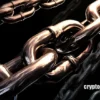What is The Graph?
The Graph is a decentralized protocol designed for indexing and querying data from blockchains. Often dubbed as the “Google of blockchains,” it serves as an essential layer of the Web3 ecosystem, allowing developers to efficiently access data across various blockchain networks. The protocol enables the creation of “subgraphs,” which are open APIs that any developer can use to query data for decentralized applications (dApps). By decentralizing the process of data retrieval, The Graph ensures that blockchain data can be accessed in a reliable and censorship-resistant manner, which is crucial for the growth and sustainability of the Web3 ecosystem.
How Does The Graph Work?
The Graph functions through a decentralized network where participants play specific roles. Indexers, Curators, and Delegators work together to maintain the integrity and efficiency of the network. Indexers are node operators who process the data and serve queries. Curators are responsible for identifying valuable subgraphs, and Delegators support the network by staking tokens on the Indexers they trust. This system is underpinned by The Graph’s native token, GRT, which is used to incentivize participation and maintain the network’s security and accuracy.
Launch Date and Initial Development
The Graph was officially launched in July 2018 by a team led by Yaniv Tal, Brandon Ramirez, and Jannis Pohlmann. Their vision was to create a protocol that could index and make blockchain data easily accessible, addressing a critical need in the rapidly expanding blockchain ecosystem. The project quickly gained traction, and by December 2020, The Graph Network’s mainnet went live. This marked a significant milestone, transitioning from a hosted service to a fully decentralized network where data queries are executed across multiple blockchains.
Evolution and Milestones
Since its mainnet launch, The Graph has experienced exponential growth. Initially, it supported a handful of Ethereum-based subgraphs. Today, it indexes data across more than 50 blockchains, including prominent ones like Polygon, Binance Smart Chain, and Avalanche. By mid-2021, The Graph had processed over 20 billion queries, reflecting the rising demand for decentralized data solutions.
The protocol has also seen significant community involvement and developer participation. The Graph Foundation has issued several grants to support ecosystem growth, including substantial funding to core developer teams like Figment and StreamingFast. Additionally, The Graph has hosted numerous hackathons and educational initiatives, further solidifying its position as a key infrastructure provider in the Web3 space.
The New Era: Roadmap and Future Vision
The Graph is currently embarking on an ambitious roadmap designed to expand its services beyond traditional subgraphs. The protocol aims to serve all data needs within the Web3 ecosystem, from basic queries to advanced analytics and interactions with large language models (LLMs). This new era focuses on enhancing developer tools, improving network performance, and creating a more interconnected and resilient data graph. Key initiatives include the migration to Layer 2 solutions like Arbitrum, the introduction of new query languages, and the development of a comprehensive knowledge graph that will further empower decentralized applications.
As the Web3 landscape continues to evolve, The Graph remains at the forefront, providing critical infrastructure for decentralized applications. Its ongoing innovations and expanding ecosystem make it an indispensable tool for developers and a cornerstone of the decentralized internet. With a strong community and a clear vision for the future, The Graph is set to play a pivotal role in the next generation of blockchain-based services.
The Graph Staking: Updated Guide for 2024
Staking GRT in The Graph ecosystem plays a vital role in securing the network and enabling efficient data indexing. However, with recent updates, staking GRT now requires a few key considerations, particularly regarding the blockchain network you are using.
Understanding the Move to Arbitrum
To stake GRT, it’s important to note that staking is now primarily conducted on the Arbitrum chain, a Layer 2 scaling solution for Ethereum. The previous method of staking GRT on the Ethereum mainnet has been deprecated due to the impracticality of Ethereum’s high gas fees. Transitioning GRT from Ethereum to Arbitrum is necessary for staking, but this bridging process can be expensive due to those same gas fees, making it viable mainly for large transfers.
Staking Process Overview
Here’s an updated step-by-step guide to staking GRT on Arbitrum:
- Set Up Your Wallet: You need an Ethereum-based wallet like MetaMask. For added security, it’s recommended to use MetaMask in conjunction with Ledger Live, which allows you to use a hardware wallet like Ledger.
- Swap for GRT on Arbitrum: To efficiently stake GRT using Ledger Live on the Arbitrum network, a practical approach is to use MetaMask to purchase USDC directly on the Arbitrum network, then swap it for GRT within the same chain. This method completely bypasses the need to bridge GRT from Ethereum, avoiding the exorbitant gas fees associated with the Ethereum network. To do this, first, set up MetaMask and add your Ledger as a separate wallet within MetaMask. This setup allows you to manage transactions securely, with the flexibility to use MetaMask independently for tokens not supported by Ledger. After acquiring USDC on Arbitrum via a supported exchange, swap it for GRT directly on the Arbitrum network using a decentralized exchange (DEX). This streamlined process ensures you avoid high fees while securely staking your GRT on The Graph network.
- Bridge Your GRT to Arbitrum: If your GRT is on the Ethereum mainnet, you will need to bridge it to the Arbitrum network. Due to high Ethereum gas fees, this process is only practical for large amounts of GRT. Use the official Arbitrum Bridge to transfer your tokens from Ethereum to Arbitrum.
- Connect to The Graph Network Beta dApp on Arbitrum: Visit the Network Beta dApp for The Graph. Make sure your MetaMask is configured to connect to the Arbitrum network.
- Choose an Indexer on Arbitrum: Within the dApp, select an Indexer to delegate your GRT. Indexers are node operators who process queries and maintain the network. As of the time of this writing you want to look under “participants” to find an indexer to delegate to.
- Delegate Your GRT: Enter the amount of GRT you wish to stake and confirm the transaction through MetaMask. Ensure you are on the Arbitrum network to avoid any issues. It’s also not a bad idea to either write down the name of the indexer for future reference or to pull them up by clicking on them and then bookmark them in your browser. I recommend creating a special folder to keep a record and fast access to all such staking so you can go through and check it periodically. Oftentimes you will need to claim your staking rewards and even re-delegate them back into the pool to earn more rewards.
- Managing Rewards: Staking rewards are typically distributed daily, and you can manage or withdraw them through the same dApp. The rewards are dependent on the performance of the Indexer you choose.
Important Considerations
- Ethereum Gas Fees: Bridging GRT from Ethereum to Arbitrum is costly due to Ethereum’s high gas fees. This step is generally recommended only for large amounts of GRT (Arbitrum Bridge).
- Security: Using MetaMask with Ledger Live provides enhanced security by storing your private keys offline.
By following these steps, you can efficiently stake your GRT on Arbitrum and contribute to the security and functionality of The Graph network. Always ensure that you are connected to the correct network (Arbitrum) and follow best practices for wallet security.
Wallets
Several wallets support GRT, allowing users to manage, stake, and transfer their tokens securely. Here’s a list of popular wallets compatible with GRT:
- MetaMask: A widely used Ethereum wallet that supports GRT. It’s compatible with web browsers and can also be used with hardware wallets like Ledger for added security.
- Ledger (with Ledger Live): A hardware wallet that provides secure storage for GRT and can be connected with MetaMask for staking.
- Trezor: Another hardware wallet that supports GRT when connected through third-party software like MetaMask.
- Trust Wallet: A mobile wallet that supports GRT and various other Ethereum-based tokens, offering a user-friendly interface for managing assets.
- Coinbase Wallet: A self-custody wallet that supports GRT, enabling users to manage their tokens and interact with decentralized applications (dApps).
- MyEtherWallet (MEW): An Ethereum wallet that supports GRT, providing both web and mobile interfaces for token management.
- Atomic Wallet: A multi-currency wallet that supports GRT, available on both desktop and mobile platforms.
These wallets offer various features, including integration with dApps, staking capabilities, and compatibility with multiple devices, making them suitable for different user preferences.




